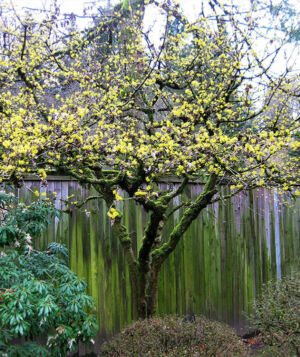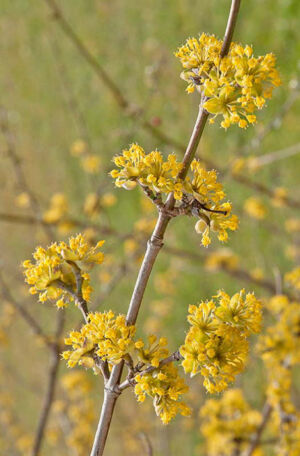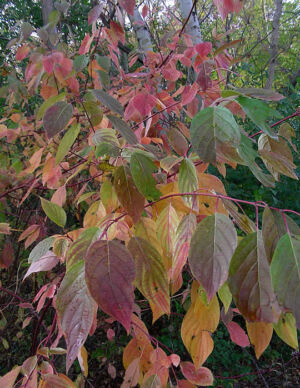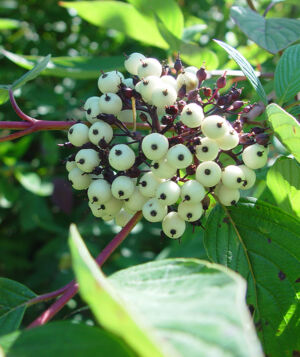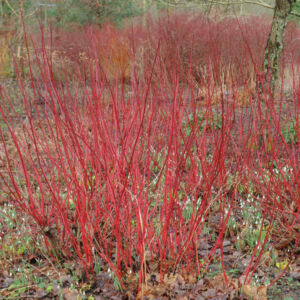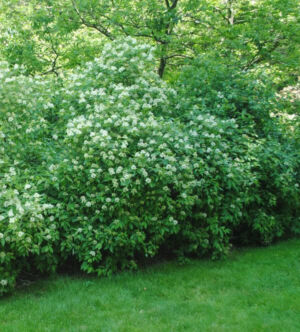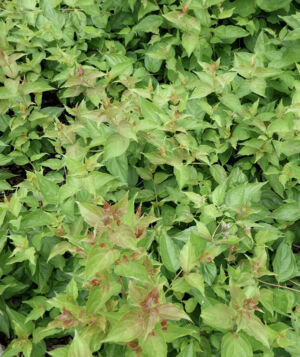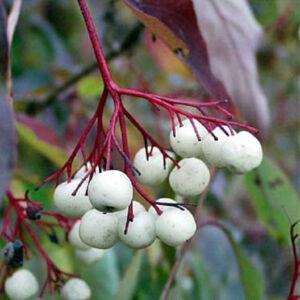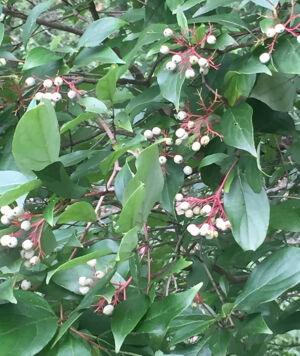Cornus mas- Cornelian cherry Dogwood
Description
General: A large multi-stemmed deciduous flowering shrub or small tree with a rounded habit branching to the ground. Grows 20-25’ in height and 15 -20’ wide.
Leaves: Opposite and simple, ovate, 2-4” long. Dark green and glossy in the summer sometimes turning a purplish red in the fall though this isn’t reliable yearly (Leaves may drop when still green in late fall).
Flowers: Short stalked yellow umbels emerging from old wood in March. Flowers are dense, showy and rounded clusters ¾” in diameter and emerge before leaves.
Fruit: Bright red drupes 5/8” long in July.
Attributes: Cornus mas can be utilized in a shrub border, as a hedge or screen. It can also serve as a foundation plant or specimen due to early bloom time and compact, small tree size.
Culture
Hardiness: Zones 4 to 7.
Growing Conditions: Prefers rich, well drained soil and is ph adaptable. Full sun or part shade.
Maintenance: No serious disease or insect issues. Only requires pruning if the attempt is being made to remove the lower branches and produce more of a tree form. Tends to sucker with aggressive pruning.
Transplanting: Transplants easily.
Our Experience
Experience at Great Hill
Cornus mas is among one of the more interesting spring flowering shrubs in how very early it blooms (before forsythia and flowering fruit trees) and how unique and distinct its flowers and fruits are. For earliest color on the landscape its unbeaten. Makes for a nice specimen when trained as a small tree.
Cornus sericea- Redosier Dogwood
Description
General: A broad, spreading/suckering and rounded multi stemmed shrub that grows 7′ to 9′ tall with a spread of 10′ or more.
Leaves: Opposite, simple and ovate 2 to 5″ long. Dark green in the summer maturing to a purplish red in the fall.
Flowers: White flat topped cymes grow to 2 1/2″ and bloom in late spring with sporadic rebloom throughout the summer.
Fruit: White drupe (sometimes with a blue tinge) 3/4″ in late summer. Enjoyed by birds.
Attributes: Cornus sericea is a showy four season shrub that stands out in the landscape due to its red exfoliating bark, white flowers and autumn berries. Effective as a specimen plant or for massing. Useful in wet locations or as erosion control species.
Culture
Hardiness: Zones 2 to 7.
Growing Conditions: Adaptable to a range of soils but prefers rich moist soils in full sun to part shade.
Maintenance: Susceptible to leaf and twig blights, canker, leaf spot, scale and bagworms.
Transplanting: As its fibrous rooted, its easily moved bare root.
Our Experience
Experience at Great Hill
Cornus sericea is especially breathtaking in the winter garden and compliments a variety of evergreens. We have several red twigs growing along the wood line to our nursery that add both color and contrast to an otherwise overgrown space. They naturalize readily, provide erosion control and require little to no maintenance.
Cornus racemosa- Gray Dogwood
Description
General: A multi-stemmed, suckering shrub with short spreading branches that forms a colony over time. Grows 10 to 15′ in both height and width.
Leaves: Opposite, simple and narrow -elliptic to lanceolate. Leaves grow 2 to 4″ long and are gray to dark green in the summer turning purple and red tones in the fall.
Flowers: 2″ white panicles late May to early June
Fruit: 1/4″ white drupes in early fall are often overshadowed by the reddish pedicels which hold them and persist after they have fallen or have been eaten by birds.
Attributes: Effective in naturalized areas, shrub borders, along ponds or in poor soils. Stands out in the fall and winter landscape.
Culture
Hardiness: Zones 3 to 8.
Growing Conditions: Medium, well drained soils in full sun to part shade. Tolerant of poor soils and pollution.
Maintenance: No serious insect or disease issues. Will need to prune our suckering stems if keeping contained.
Transplanting: As its fibrous rooted, its easily moved bare root.
Our Experience
Experience at Great Hill
While we don’t currently have any stands of Cornus racemosa on great hill, it has naturalized along the woodline in one of our tree nureries. Specimens stand out especially in the fall and winter when gray bark and fall foliage coupled with red stems are revealed..


